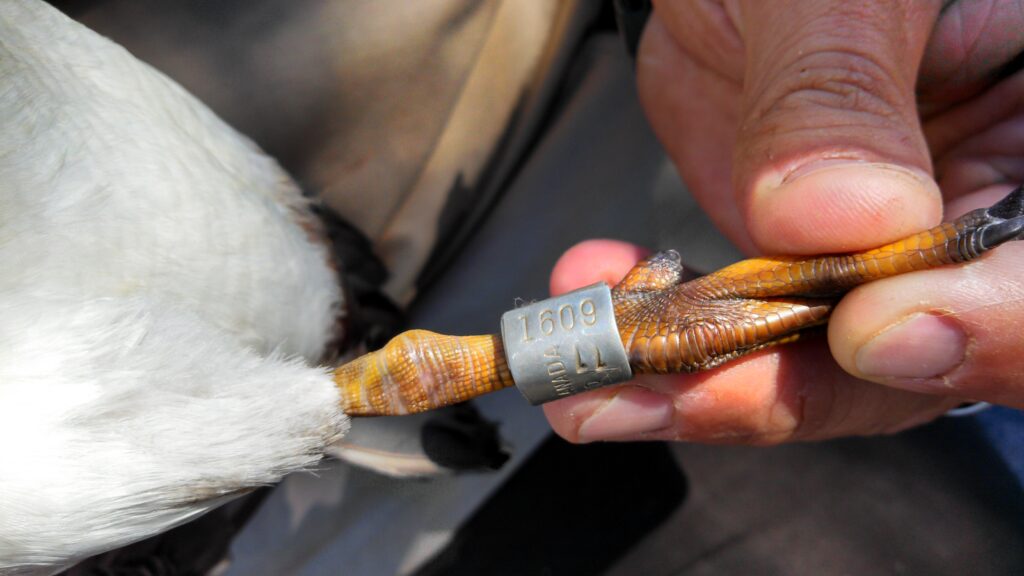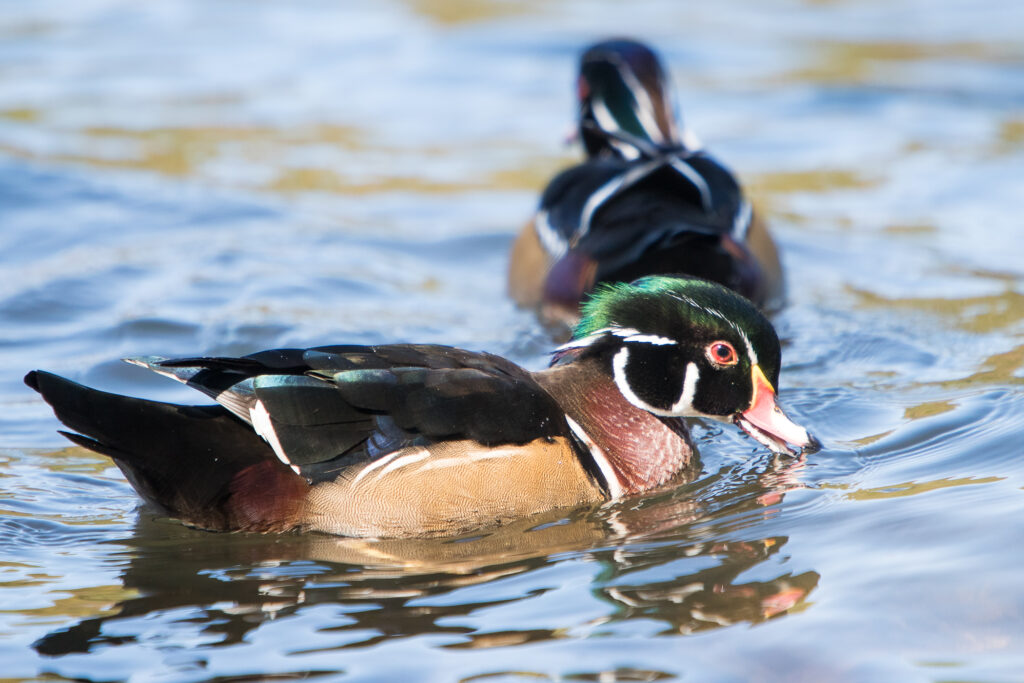Wood duck banding shows kids importance of building and sustaining population

HULL, Ill. — How much wood, would a wood duck duck if a wood duck could duck wood?
A bunch of kids at Gardner Camp probably didn’t learn the answer to that question, but they learned plenty more during a Wildlife Encounter Series session.
Youth from around the area attended a wood duck banding seminar in late August.
“The kids just love each one of these wildlife encounter series that we’ve done,” said Jen Tyler, Gardner Camp director. “(The event) provides a little education for them, in addition to getting them out on the property here at the camp and exploring nature. They have just had a blast.”
On August 26, volunteers from the camp hopped on Tim Krumwiede’s airboat and collected the ducks. Krumwiede is a retired district wildlife biologist from Illinois Department of Natural Resources who volunteers for these programs. On August 27, the kids were engaged with a presentation on wood duck basics and the banding process.
“I’ve always been amazed at how interested they are,” Krumwiede said.
The presentation covers several areas including how to identify the birds as a drake or a hen and the maturity of the bird. Clues in using the colors and feathers of the birds are great ways to determine their gender and maturity. The kids also learned about the Mississippi Flyway as well as the three other flyways in North America.
“It’s important to get kids started and educated whether they’re a hunter or not,” Krumwiede said. “It’s great information as to how the populations work and how they interact with other species and, of course, habitat and the climate and everything else that’s related to that.”

At one point, wood ducks were endangered but through programs like this one at Gardner Camp, their population is flourishing according to Krumwiede.
“Population surveys basically determine percent mortality or therefore percent survival of birds that are banded,” he said. “You want those animals to do well so that you have something to hunt. Clearly over time, the biggest sponsor of habitat and hunting has been hunters.”
Close to 100 ducks were banded this year. When the ducks are harvested, the hunter hopefully will either call the number on the band or log the kill online so the IDNR can track migration patterns and population densities.
The programs aren’t just for kids that want to hunt.
“There was a young lady here that wasn’t real keen on the whole aspect of killing animals, but she was very much interested in their well-being and their management,” Krumwiede said.
Founded in 2012, the camp sits on 500 acres of land donated by Jack Gardner, who explicitly stated that the land must be used for the education of today’s youth at no cost to the students.
Krumwiede feels the area is blessed to have such a camp.
“Clearly, Gardner camp is a huge asset to the Tri-States, for sure,” he said. “You know, I think it is a bit of a secret that a lot of people don’t know about.”
Meanwhile, Tyler loves the kids’ smiles.
“Our kids just had so much fun,” she said. “They had such an exceptional experience. All of them were just filled with so much excitement and joy. They just didn’t want to leave.”
Miss Clipping Out Stories to Save for Later?
Click the Purchase Story button below to order a print of this story. We will print it for you on matte photo paper to keep forever.
